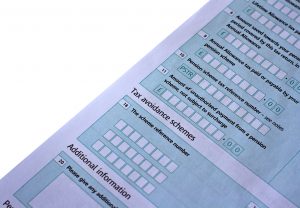Payment on account – are you ready?

If you turn down the radio and listen really closely, you can possibly hear the nation’s sole traders dimly groaning in the background. This will have something to do with the fact that their next payment on account is due. It’s a punishment unique to the self employed who aren’t directors of their own companies – and for those in the first 2-3 years of running their business, it can be a cash flow nightmare.
In this article, Burton Beavan explains what payment on accounts are, what you need to pay, when you need to pay it, and how to get through the process.
What is payment on account?
“Payment on account” is the name for the system requiring two payments of tax from the self-employed during the course of a year. You make one tax payment on the 31st of January and another on the 31st of July.
How much do you need to pay?
You can work out how much you owe by looking at your tax bill from the previous year.
Let’s look at Sasha – a client of ours in her fourth year with us and her 2016/2017 tax bill came out as £50,000 for the second year in a row.
This means that, with payments on account, Sasha will need to pay £25,000 in tax on the 31st of January 2018 and £25,000 on the 31st of July 2018.
What happens if your tax bill increases?
Sasha had an even better year in 2017/18 and her tax bill increased to £70,000.
Sasha’s instalments are going to be calculated based on last year’s numbers, where she only paid £50,000. She’s paid £25,000 on 31st January 2018 and her £25,000 on 31st July 2018.
This leaves HMRC £20,000 down, which isn’t something that they’ll just let slip. This additional £20,000 must be paid by 31st January 2019. HMRC refer to this as your “balancing payment”.
How balancing payments affects your 31st January payment
As we mentioned, Sasha paid her £25,000 on 31st January 2018 and her £25,000 on 31st July 2018.
However, the amounts she pays will change in 2019. Sasha’s payment in January 31st will be the £20,000 balancing payment along with half of her 2017/2018 tax bill, which is £35,000, totalling £55,000. Her 31st July payment will be the rest of her 2017/18 tax bill (£35,000).
If Sasha’s 2017/2018 tax bill had stayed at £50,000, then she would have pay £25,000 on 31st January 2019 and £25,000 on 31st July 2019.
Notes on payments on account
It is worth mentioning that if your tax bill is less than £1,000, then you can pay in a single instalment. However, you need to be prepared because if your tax bill rises above that amount over the course of the year as you then will be expected to pay in two instalments.
You also don’t have to make two payments in a year if 80% of the tax you owe is paid at source.
How does the first year of payments on account work?
If you reach the end of your first tax year (for example, the 2017/2018 tax year) and you have accrued £10,000 in tax, HMRC will want all of that money by 31st January 2019.
But that’s not all, they’re going to want 50% more too. You’ll have to pay £5,000 as an advanced payment on account on 31st July 2019 for your 31st January 2020 payment.
They’re also going to want another £5,000 on 31st January 2019. Once you’ve made each of these payments in full, you’ll have paid £20,000 in tax. This is no small sum for a business that is less than 3 years old.
We can help
If you are looking for guidance about payments on account, then get in touch with our team. We will be more than happy to discuss how it all works in greater detail with you. Call us today on 01606 333 900 or email hello@burtonbeavan.co.uk.







